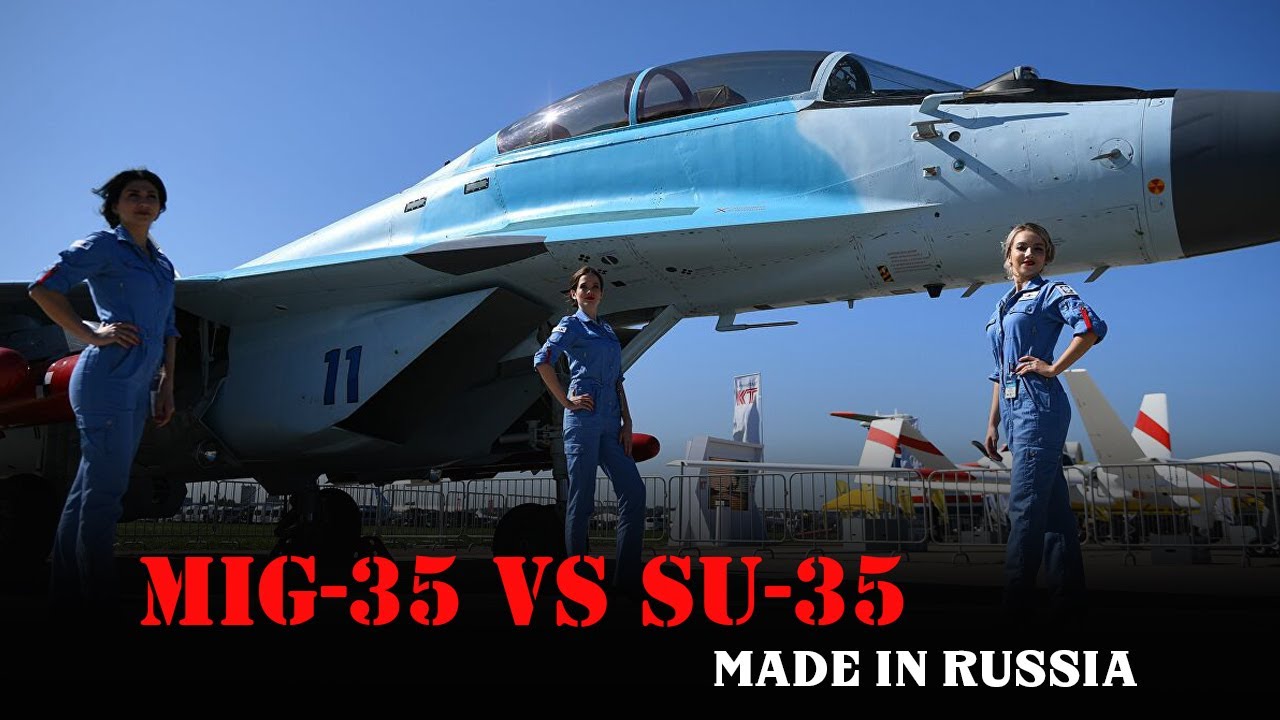
The Mig-35 is an advanced development of the MiG-29. This is the version that deserves to be considered the best of the Fulcrum family.

The Mig-35S is equipped with modern avionics systems, integrated electronic ωɑɾʄɑɾε equipment, and 10 hard points. The fighter possesses super maneuverability, powered by 3-dimensional thrust vector engines. The MiG-35 is considered the world’s best multi-role fighter for all missions.
The Russian military operates a variety of fighter aircraft to fulfill different roles and missions within their overall defense strategy. While both the MiG-35S and the Su-35S are advanced Russian fighter jets, they serve different purposes and complement each other in terms of capabilities. Here are some reasons why Russia may need both aircraft:
- Role Differentiation: The MiG-35S and Su-35S have different designations and intended roles within the Russian Air Force. The Su-35S is a heavy multirole fighter primarily designed for air superiority missions, capable of engaging enemy aircraft and conducting ground attacks. The MiG-35S, on the other hand, is a lighter and more maneuverable fighter that excels in air-to-air combat and close air support missions.
- Operational Flexibility: Having a diverse fleet of fighter aircraft provides operational flexibility and allows for a broader range of mission capabilities. By having both the MiG-35S and Su-35S, Russia can optimize the utilization of its air assets across different scenarios, including various mission profiles, threat environments, and operational requirements.
- Industry and Production Considerations: The production and development of multiple aircraft types can benefit the domestic defense industry. It allows for distributed workload and expertise across different manufacturers, supporting employment, technology transfer, and economic considerations within the country.
- Export Potential: Russia has a significant defense export industry, and having multiple advanced fighter aircraft in its inventory enables the country to offer a range of options to potential international customers. Different countries may have specific requirements and preferences, and having multiple fighter models allows Russia to cater to a broader market.
- Technology Development and Evolution: The MiG-35S and Su-35S may incorporate different technological advancements and systems. By simultaneously developing and operating multiple fighter types, Russia can explore and refine various technologies, systems, and capabilities that can later be integrated into future fighter aircraft programs.

The Su-35, known as the elite Sukhoi 4++ generation fighter, is also a super maneuverable aircraft. The single-seat and two-engine aircraft is a derivative of the famous Su-27 heavy fighter. While both the fighter jets, the MiG-35, and the Su-35, deploy similar technologies, the two are different in their fundamental designs. Although an assessment of their capabilities and key differences can provide insight into the nature of both programs and their possible futures.

According to Russian military experts, the heavy Flanker is needed to escort long-range bombers, to attack strategic locations deep in enemy territory, as well as to break through fortified air defense areas. In turn, the purpose of fighters like the MiG-35S is to deploy it closer to the frontlines. On the other hand, the Mig-35 is the most preferred fighter to carry out air combats, aerial reconnaissance, striking surface targets and providing support to troops and forces at land.

The Su-35 is designed with intent and mission to gain air superiority thereby capable of spotting and destroying targets at air and ground. With the help of Irbis-E radar, the range of detection is over 400km and can damage up to 30 airborne targets simultaneously. The MiG-35, employs the first active electronically canner array radar (AESA) which is more sophisticated and lighter than Irbis-E. Despite this, the Su-35 is preferred as it has an edge over MiG-35 in situational awareness.

The export potential of the MiG-35S is enormous with its asking price of only $45 million. By comparison, the F-16 with a similar configuration, the F/A-18 Super Hornet, Eurofighter Typhoon and the Dassault Rafale will cost $68M, $75M, $120M and $130 million, respectively.






